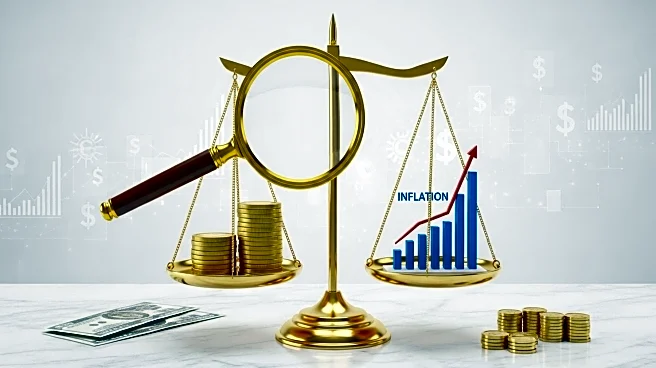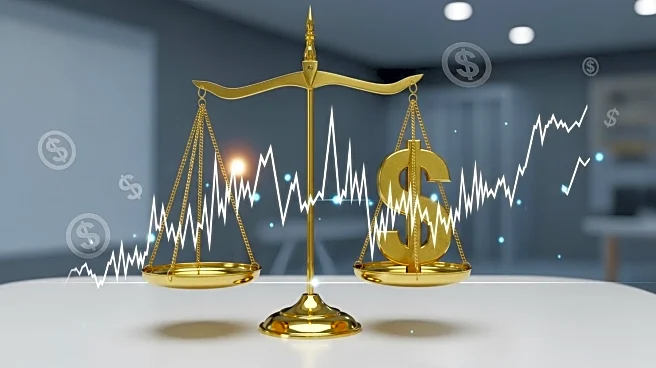What's Happening?
U.S. Treasury yields have increased following the Federal Reserve's recent interest rate cut, with the 10-year Treasury note yield reaching a two-week high. This rise in yields is counterintuitive given the Fed's decision to lower short-term rates, but reflects investor concerns about future economic growth and inflation. The Fed's rate cut was described as 'risk management' by Chairman Jerome Powell, with expectations of further cuts later this year. Investors are closely monitoring economic indicators, including jobless claims and inflation data, to assess the impact of monetary policy on the economy.
Why It's Important?
The increase in Treasury yields suggests investor skepticism about the effectiveness of the Fed's rate cuts in stimulating economic growth. Higher yields can lead to increased borrowing costs, potentially slowing down economic activity and affecting sectors reliant on credit. The Fed's actions are critical in maintaining economic stability, and any misalignment with market expectations could lead to volatility in financial markets. The relationship between interest rates, inflation, and economic growth will be pivotal in shaping future monetary policy decisions.
What's Next?
Investors will be watching upcoming economic data releases for further insights into inflation trends and the health of the labor market. The Fed's policy meetings in October and December will be crucial in determining the future direction of interest rates. Market participants are also keeping an eye on geopolitical developments, such as U.S.-China relations, which could influence economic conditions. The Fed's ability to balance inflation control with economic growth will be critical in shaping monetary policy and investor sentiment.










